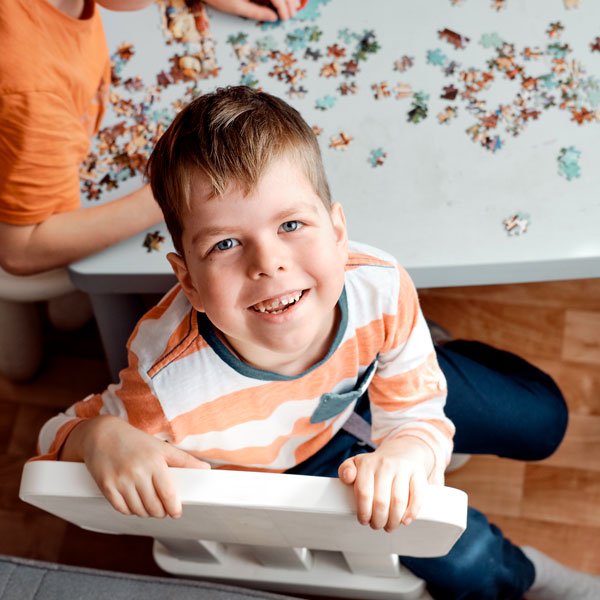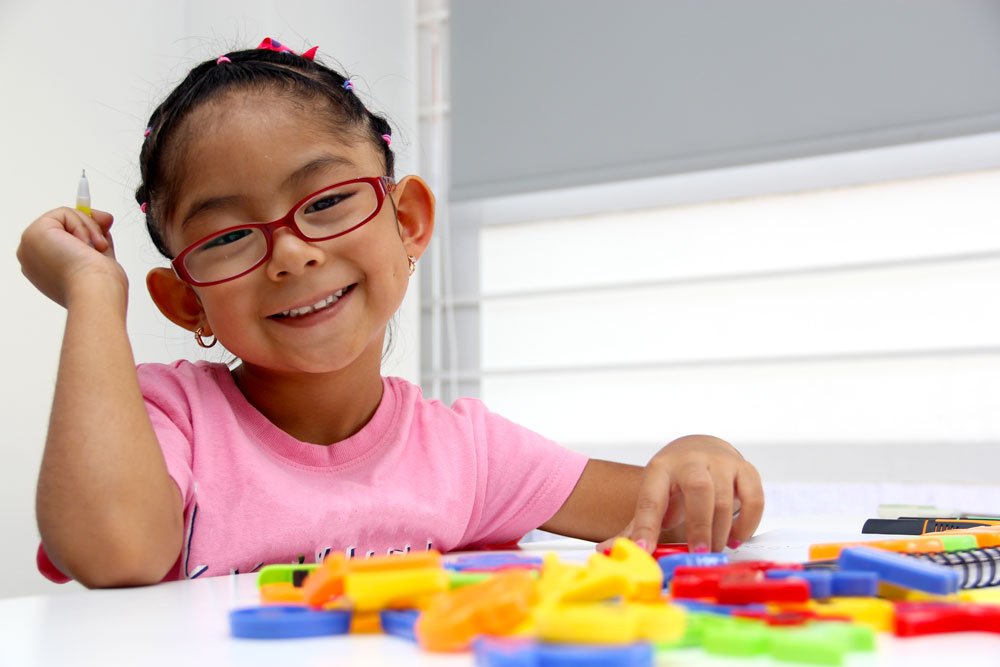
Our ABA services
ABA therapy covers many developmental areas
Even with scientifically proven techniques of ABA, it can be administered to varying degrees. The phrase intensive therapy is often used. Our approach to intensive is consistency and frequency covering a comprehensive range of skills including communication, social skills, behavior and self-care. Recommendations for intensive therapy are 25 to 40 hours per week. Determining each child’s level of therapy is based on their needs. Typically, the parent or guardian is the best judge of their child’s needs.
Some ABA therapy providers function as if intensive therapy requires extreme regimented therapy that pushes kids to compliancy even though the student is escalated in behavior. This has led to many articles with negative opinions of ABA. Keystone Achievements follows best practices without the extremes of accomplishing compliance by pushing kids to the point they become resistant to therapy. We strive for a learning atmosphere that provides goal accomplishments and celebration of their successes. The best rewards are those we work hard for to achieve our goals. We want those we work with to see their accomplishments and continuously gain confidence.
In-center therapy
Therapy provided in a center setting has many advantages. A controlled environment outside the home allows for safe learning and experiences with peers all under the supervision of a therapist providing one-to-one skill building therapy. Socialization opportunities are critical in developing language, respect, and transferring learned skills in various environments. Centers provide sensory and gross motor devices typically not found in homes or practical for therapists to bring into home therapy. Another very important element of center therapy is the opportunity for parents and guardians to have the time they need for work, other family members, and themselves. Providing therapy in a center setting can be very advantageous to the core family.
In-home therapy
The home environment needs to be safe and relaxing for the entire family. This can be challenging with autism. Focusing on the skills needed to communicate with parents, siblings, and anyone else at home is a critical component for any household. The home also provides a comfortable environment for children to work on skills needed to function and navigate social interactions outside the home. Connecting developed skills from a center and home environment greatly improves a child’s ability to transfer those skills to the community and school. Consistent therapy for both the child with autism and family members to learn and implement will result in the most effective and amazing results. Learned communication, behavior, and coping strategies for all family members will become natural interactions throughout daily life.
Trauma informed care
Trauma-informed care and culturally responsive practice is an emerging hallmark for excellence in the field of ABA. Keystone is proud to transparently represent this as an ABA company by providing BCBAs opportunities to: engage in self-assessment; quality assurance checks and balances to include research-based measures for trauma-informed care and culturally responsive practice (Beaulieu & Jimenez-Gomez, 2022); design individualized programming for implementation by a compassionate team of behavior technicians; and engage with caregivers collaboratively to establish both social validity and effective generalization.
Philosophy of treatment
Many techniques have developed over time that are considered ABA. No one method is suitable for all. We are all unique and require our needs to be met with the right formula of teaching techniques and by teachers with compassion that are willing to embrace the challenges and successes. Keystone Achievements uses best practices from various ABA methods to tailor programs to each child’s needs. Some of the most common methods are:
Incidental Teaching or Natural Environment Training provides real-life meaning to skills. It focuses on teaching skills where a child would naturally use them. Incidental teaching strategies were developed to facilitate generalization that can help a child to transfer skills to everyday situations.
DTT (Discrete Trial Teaching) involves breaking a task down into smaller, more teachable components and teaching each component separately. DTT is based on the understanding that practice helps a child master a skill. It is a structured therapy that uses a one-to-one teaching method and involves intensive learning of specific behaviors.
Verbal Behavior is designed to motivate a child to learn language by developing a connection between a word and its meaning. This could include a therapist labeling a child’s needs to include a deliberate focus on teaching them how to use their words functionally.
Natural Language Paradigm (which has been labeled as the predecessor of pivotal response training) uses the environment, which may be deliberately arranged, in order to increase opportunities to use a specific language. Play environments are often used in NLP to model words and phrases and prompt answers to questions.
Pivotal Response Training is an intervention that relies on naturally occurring, teaching opportunities and consequences. The focus is on increasing motivation by adding components such as turn-taking, reinforcing attempts, child-choices, and interspersing pre-learned skills.
Frequently asked questions
-
Let’s start by breaking down the term Applied Behavior Analysis and then we will simplify the meaning and apply it to programming.
Applied – principles applied to socially significant behavior
Behavioral – based on scientific principles of behavior
Analysis – progress is measured and interventions modified
ABA can be used in a variety of fields. Applying ABA to autism focuses on decreasing unwanted behaviors and increasing positive behaviors in various environments.
-
ASD can represent a wide range of different degrees of severity and types of symptoms that usually include:
Behavioral problems
Difficulties in social interaction
Communication and language difficulties
Sensory deficits
Screening tools have been developed for qualified professionals to use when determining a diagnosis for autism. Some of these tools are the Modified Checklist for Autism in Toddlers (M-CHAT) and the Parents’ Evaluation of Developmental Status (PEDS) which are lists of informative questions about your child. A doctor or psychologist that is usually in a specialty such as developmental pediatrics, child neurology, child psychologist or psychiatrist must provide the diagnosis.
-
Sessions are specified periods of time a behavioral therapist works with a student using predetermined programs tailored to their needs. Sessions typically take place between 2 hours to 4 hours with multiple sessions common in the same day for intensive therapy.
The Structure of a session depends on the individual. One student might spend the majority of their time working through Discrete Trial Training programs while another might work through Task Analysis while completing various tasks (I.e. chores, brushing teeth, reading books etc.)
Regardless of how a student is taught, natural and fluid teaching is always one of our goals. Trials and tasks are presented in ways that are as natural and organic as possible. We never want your child to feel like a "client" receiving therapy, we want them to feel like a student at school. This can also help with generalization of skills.
-
A Board Certified Behavioral Analyst (BCBA) will assess each student’s baseline to determine the starting point for programming and interventions. After these steps are implemented, the BCBA continuously oversees and supervises each student to ensure progress is being made and that the Behavior Intervention Plan is being followed.
In addition to working with our students, our BCBA’s also work with the student’s parents and therapists to guarantee all training is provided and understood by every piece of the team.
-
A Registered Behavior Technician (RBT) will work one-on-one with your child to implement the programming defined and created by the BCBA. Our therapists focus first on pairing and building rapport with their students to increase compliance. Rapport can be built in many ways, including play and providing verbal or tangible reinforcement.
Once a relationship is established and a Behavior Intervention Plan is in place, therapists run programming and interventions. We teach in several ways, some of the most common being Discrete Trial Training, Task Analysis, and guided Peer play time. -
The method of Applied Behavior Analysis identifies the four causes of behavior as:
Access to tangibles
Delaying or escaping a demand
Attention
Automatically reinforcing
For example, if a child tantrums because a preferred item was taken away, they are engaging in that behavior in an effort to get the item back. If a well-meaning caregiver returns the item to quiet the child, they have reinforced that behavior. Reinforcement makes it more likely for the child to tantrum in the future to communicate.
-
A behavior is anything anyone does that can be observed. In ABA we address Adaptive and Maladaptive behaviors.
An Adaptive behavior is something someone does that is an appropriate way of fulfilling the function of their behavior. For example, if a child wants to play with a preferred toy, the function of their behavior is to gain access to something they enjoy playing with. If the child responds to that desire by saying “I want the truck”, that is an appropriate way to gain access to that toy and would be an adaptive behavior.
A Maladaptive behavior is something someone does that is not an appropriate way of fulfilling a function of behavior. In the same example as before, if instead of using his words the child screams and points until he gains access to the toy, that is a maladaptive behavior.
In your child's programming we will focus on increasing adaptive behavior and replacing maladaptive behaviors with coping methods or adaptive behavior.
-
The goal of a Functional Behavior Assessment is to identify problem behaviors, as well as what maintains those behaviors, or the function. After this assessment is completed, a plan can be put in place to reduce or eradicate those behaviors, while replacing them with more appropriate and effective behavior.
-
With the Functional Behavior Assessment, and other assessments such as Vineland or AFLS, your child’s BCBA will gain a baseline understanding of their behaviors, functions, communication, and knowledge gaps. With that information, an intelligent and individualized program and Behavior Intervention Plan will be developed for your child.
It is important for us know each student’s likes, dislikes, behaviors, inflexibilities, abilities, and strengths as we are developing a relationship. We depend heavily on the parents or caregivers to help us with these details in the early stages. Parental involvement in the entire process is crucial to the success of the child. -
Discrete Trial Training (DTT), is a method in which we break down larger skills and teach them in smaller pieces, one step at a time. Each attempt made for a correct response is referred to as a trial.
We limit our trial data to ten trials per program. Ten trials are typically about enough that it starts to cement the fact in the student's mind but doesn’t become too repetitive, so they get bored and stop paying attention.
-
Redirection is a commonly used tool in ABA therapy. If a child engages in behavior, we often use redirection to break up that behavior and get them back on task.
For example, if a child is scratching themselves, we don’t want to provide attention to this behavior and cause it to increase, so instead we will likely provide some sort of redirection in the form of an action they cannot complete while scratching. We call this an incompatible. We might say “clap your hands” or simply “do this” while we clap our hands.
Another benefit of redirecting is that once they have completed the new action, we can reinforce them which will help us build rapport and momentum to return to the task at hand. -
Reinforcement is anything that causes a behavior to increase.
Punishment is anything that causes a behavior to decrease.
While these two terms seem very intuitive there can be times where they are opposite of what you’d expect. For example, if your child finds attention from teachers in front of peers to be aversive and they are praised for doing something well at group, that behavior might decrease because they did not want that attention. The child was punished by being praised because the behavior will now decrease.
What a child likes and dislikes are very important in ABA therapy so we can be as effective as possible at driving results and reaching their goals.
Note: Punishment procedures of any kind are never implemented without expressed consent from the parents. -
One of our key missions as an organization is to continually grow and reach new areas in need of ABA Therapy. Colorado Springs and the surrounding areas are our starting point. We plan to build on this groundwork to make ABA therapy more available to those that need it in the rest of the country soon.
-
As per the Lovaas Institue: The best outcomes have been attained when a child receives 40 hours per week of behavioral treatment. Intervention should always be individualized, and some factors, such as a child’s age and current skill level, will influence the number of hours recommended. But, 40 hours per week remains the standard from which to deviate.
-
The early warning signs for Autism can be:
No big smiles or other warm, joyful expressions by six months or thereafter
No back-and-forth sharing of sounds, smiles or other facial expressions by nine months
No babbling by 12 months
No back-and-forth gestures such as pointing, showing, reaching or waving by 12 months
No words by 16 months
No meaningful, two-word phrases (not including imitating or repeating) by 24 monthsAny loss of speech, babbling or social skills at any age
If you feel your child might be exhibiting early signs of autism, we recommend contacting your provider to seek the steps for having them evaluated.
-
Oppositional defiant disorder (ODD) is a childhood disorder that is defined by a pattern of hostile, disobedient, and defiant behaviors directed at adults or other authority figures. This can easily be confused with ASD as it is common for children on the spectrum to display similar behaviors of blaming others, arguing with adults etc. A difference though, is that a child on the spectrum will still likely comply with a request if it makes sense to them.
-
While high-functioning Autism and Aspergers Syndrome have many symptoms in common (an individual with Asperger's might display similar social and communication gaps), the primary difference between the two is that at an early age someone with Asperger's will not display a delay in language.
Due to these similarities and to simplify matters, in 2013 Asperger's was removed as an individual diagnosis from the DSM-5 and is now under the broader category of Autism Spectrum Disorder. Some providers do still use the term Asperger's even though it is no longer its own diagnosis.
-
Emotional Dysregulation refers to the inability of a person to control or regulate their emotional responses to provocative stimuli. It can also be termed “emotional hyperreactivity.”
-
One of the diagnostic criteria in the DSM 5 for ASD is “the individual shows restricted, repetitive patterns of behavior, interests, or activities”. While it’s not clear what exactly causes these inflexibilities, it can be used to the advantage of the individual. Routine and structure in a portion of their lives can help reassure them of stability and safety, giving them the ability to cope with other changes.
“We truly felt our Keystone ABA team was a part of our extended family. Their efforts to truly get to know our son so that they could address his needs was crucial to our son’s improvement. He loved going to his sessions at and connecting with both his team members and his “friends” (peers). ABA sessions were something my son truly looked forward to. And we felt peace and optimism in his participation.”




